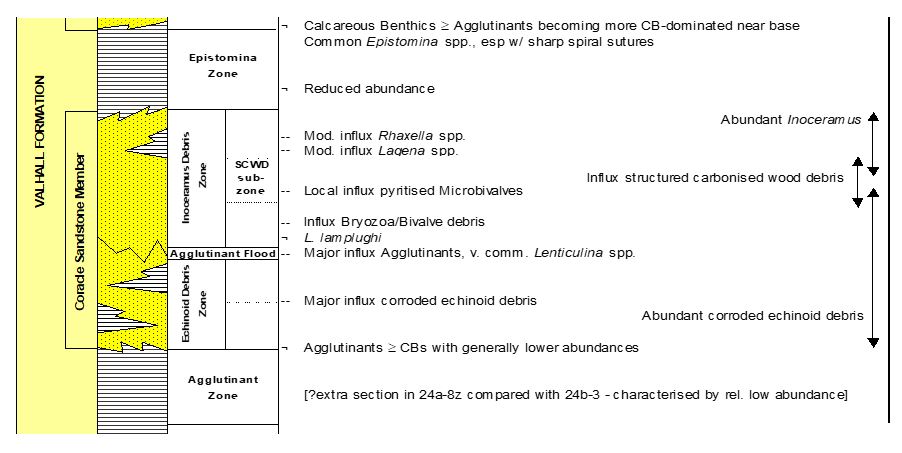Table of Contents
High Resolution Biostratigraphy
Of course, it is the goal of every stratigrapher to continuously improve the resolution that their particular stratigraphic tool can resolve. At the individual field level, reservoir units and their associated bounding and/or internal surfaces may lie (stratigraphically speaking) within one standard international or regional biozone. This is because, typically, the depositional events that go to make up a reservoir unit are normally of relatively short duration, perhaps even shorter than that of a standard biozone. The depositional environment of a reservoir unit may also be unsuitable for the existence or preservation of standard index fossil species. However, it may be advantageous to us to be able to finely subdivide the key target interval and its adjacent units biostratigraphically to enable critical development and production tasks to be done where a high degree of precision is required. In particular, horizontal or extended reach production wells or injectors can be “biosteered” through the most optimal layers of a reservoir unit to increase pay quality or avoid under- or over-pressured shale units within or above and below the reservoir.
Rather than use standard biozones at the field level the use of any laterally repeatable biostratigraphic event that could be linked to sedimentological changes and wireline logs (so-called “pragmatic” markers) can be used. The events are useable within the geographic range of the field or perhaps the sub-basin, and often no further. Within this category are the traditional tops (extinctions), but also more subtle assemblage characteristics, such as local acmes, influxes and disappearances where organisms respond to changes in the local environment.

“Local” biozonation of the Blake & Blake Flank Field in the North Sea which help biosteer production wells on that field. The vast majority of these bioevents are influenced by local, subtle facies changes specific to that field area and would not apply outside that area. All the events take place over a time interval represented by one regional (i.e. North Sea Basin) “standard” biozone.
These events are related to local changes in the environment, dynamic, physical and chemical. For instance, after the sedimentation of a turbidite, there is usually an influx of pioneer species which is quickly replaced by more diverse microfaunas as the environment settles down. These pioneer species can be recorded and their occurrence used to characterise separate turbidite packages and the mudstones that may act as seals within the field.
A second example may be the influxes of diatoms in the Lower Eocene tuff in the North Sea. The different influxes probably represent local but important restriction of the basin with a reduction in salinity. The production of “resting spores” (auxospores) at the top of the influxes suggests point the environment became particularly stressed.
It may be said that this is not conventional stratigraphy but “ecostratigraphy” (PAYNE et al. 1999) and therefore not valid text-book stratigraphy but in the situation of a hydrocarbon field, these events can form the basis for very subtle and accurate stratigraphic subdivision of rock units. Experience has shown that this works and again, pragmatically within the field, such events can be related back to the regional stratigraphy by use of the conventional markers.
This stratigraphy can be applied to reservoirs by helping to model connectivity within the reservoir. In addition, it can be applied at wellsite to give instant help to the steering of drilling to keep within reservoirs and even allowing the well path to travel along the line of maximum extraction (see the associated biosteering exercise carried out as part of the practical course). Although biosteering is conventionally horizontal, it can also be used in high-angle wells (see below; the section on Operational Biostratigraphy for “pragmatic” and “ecostratigraphic” zonal examples).
